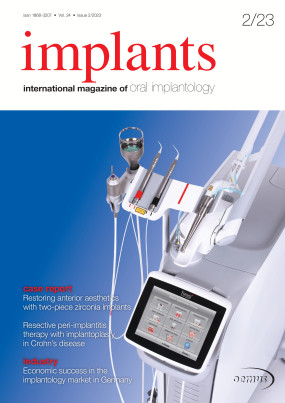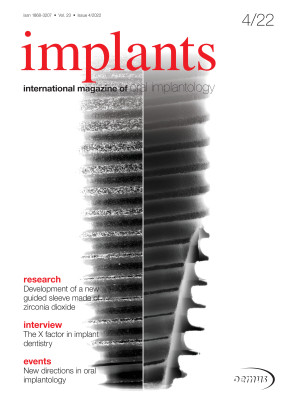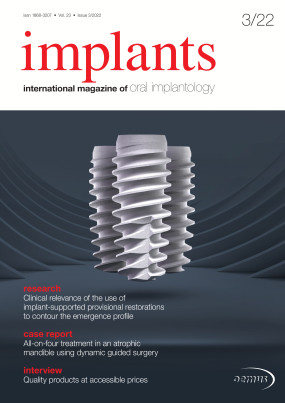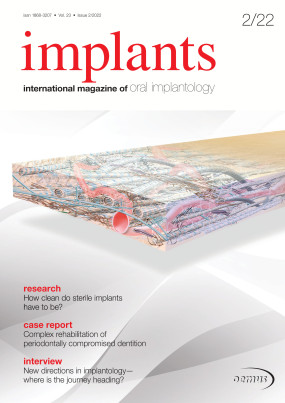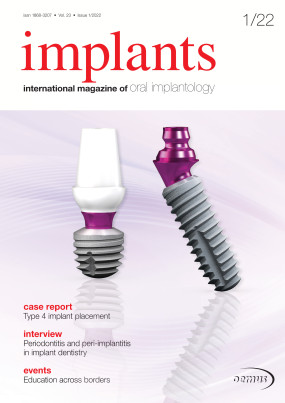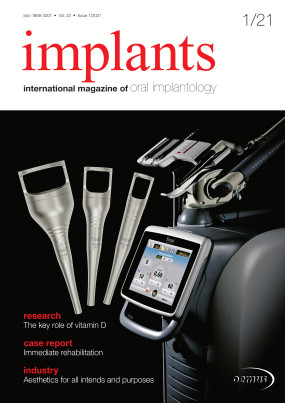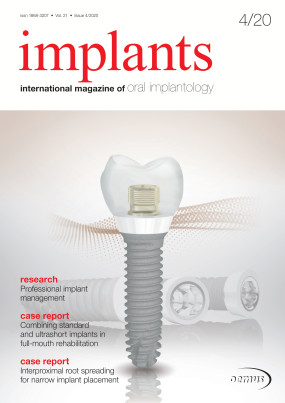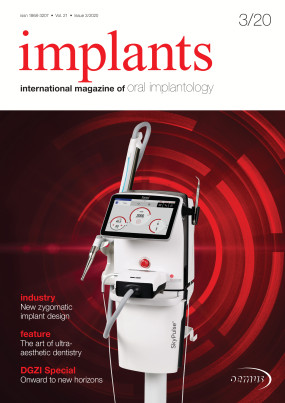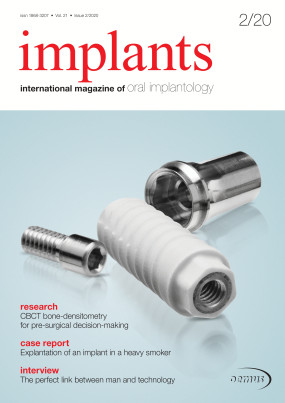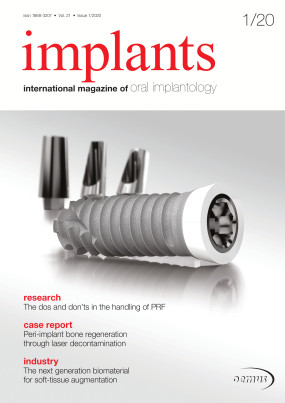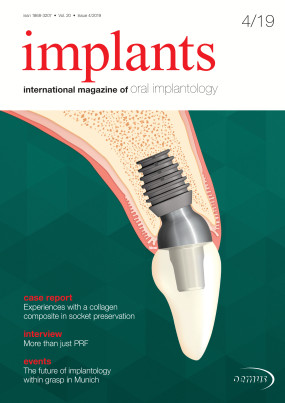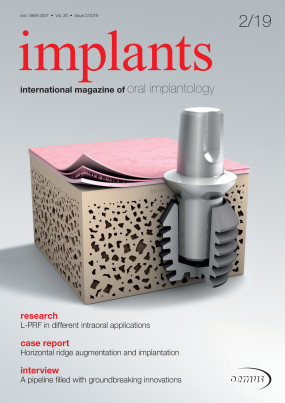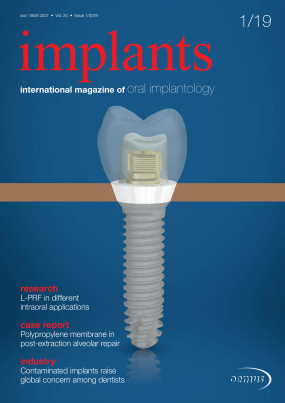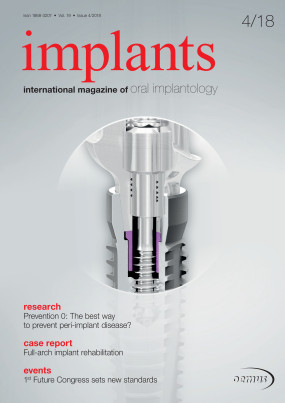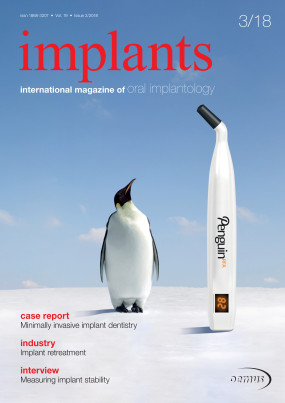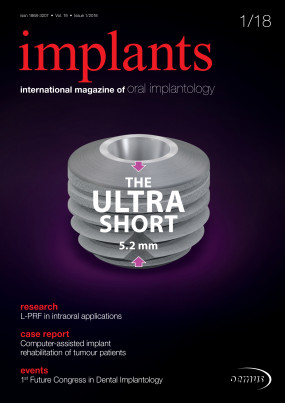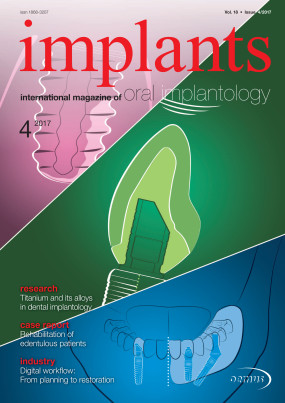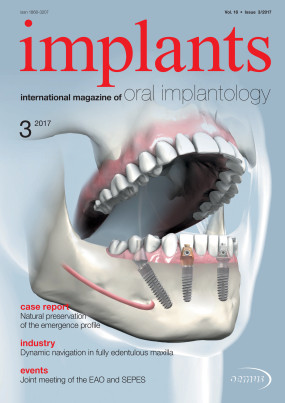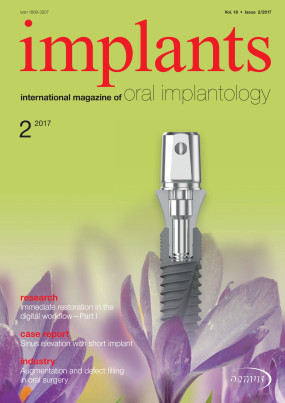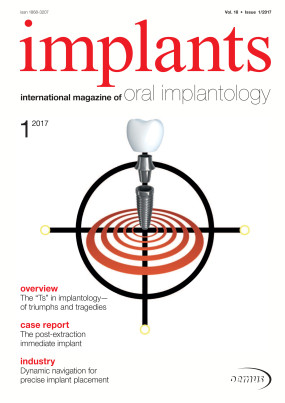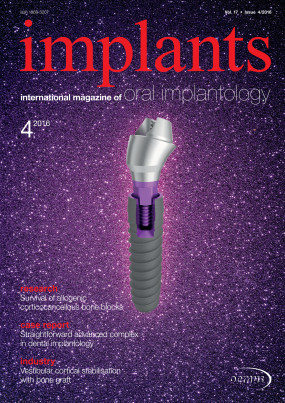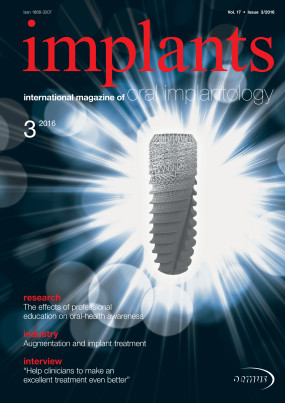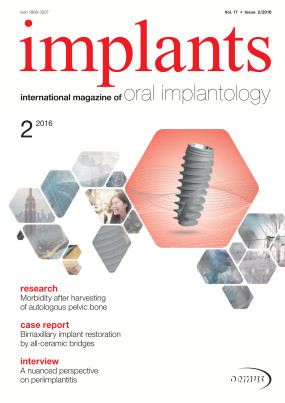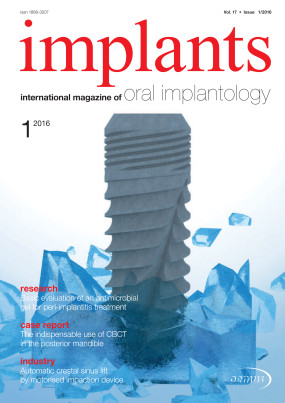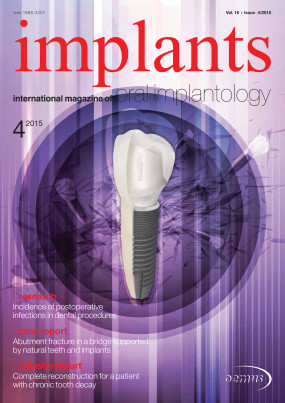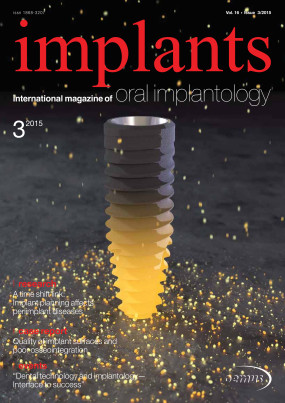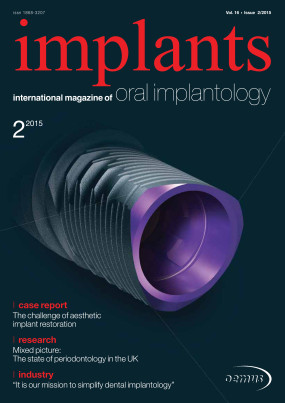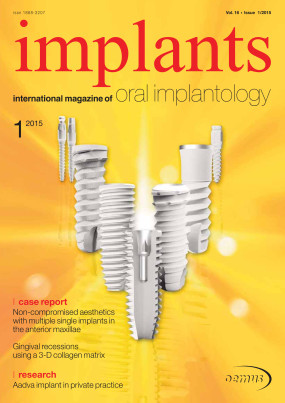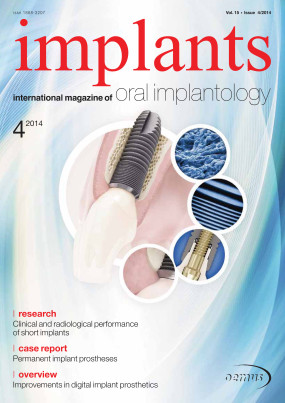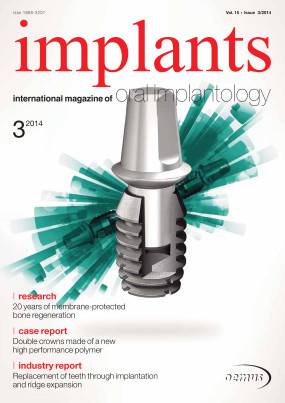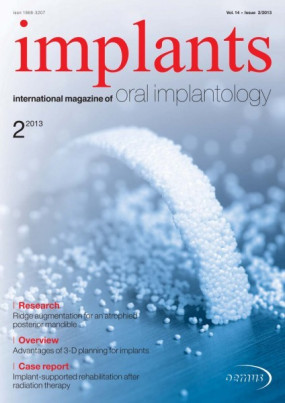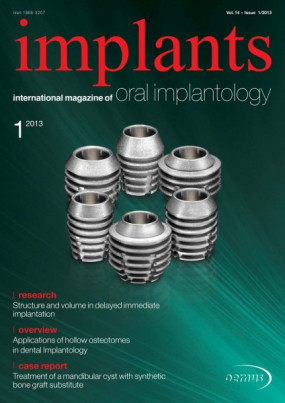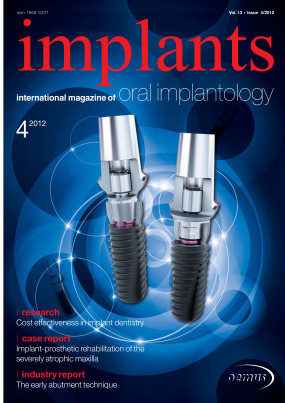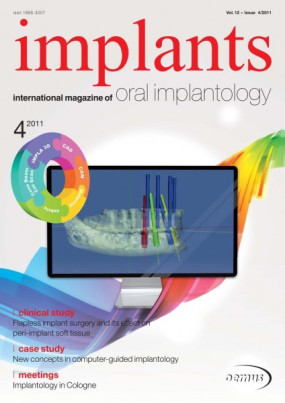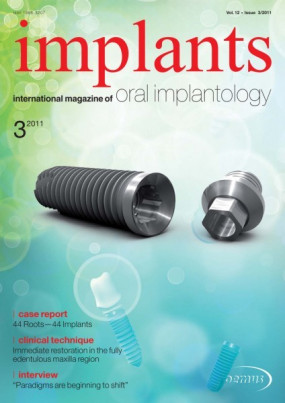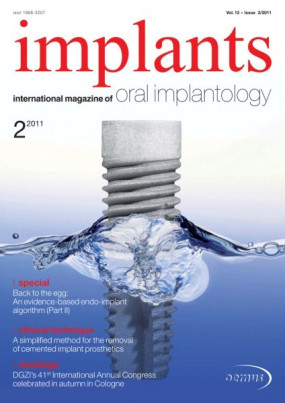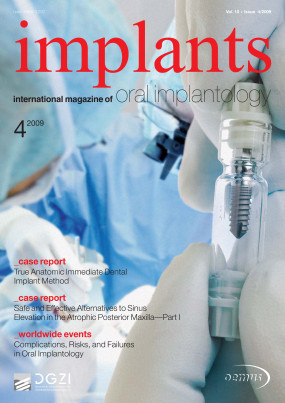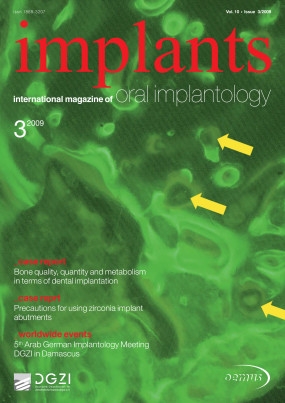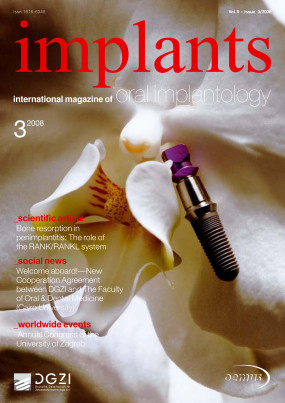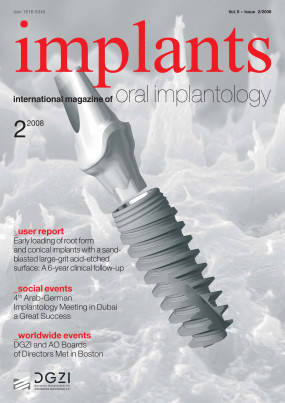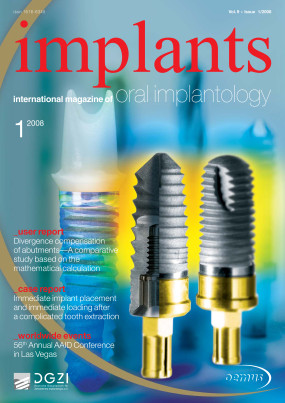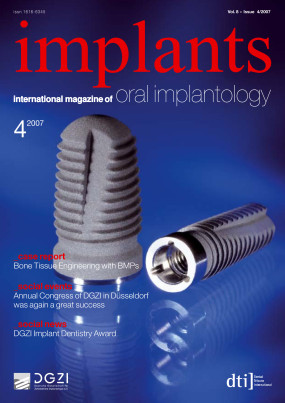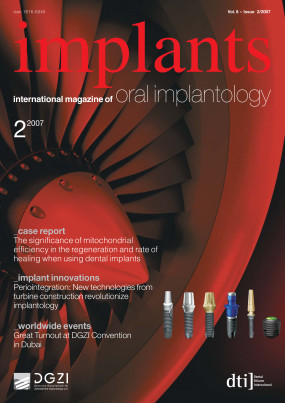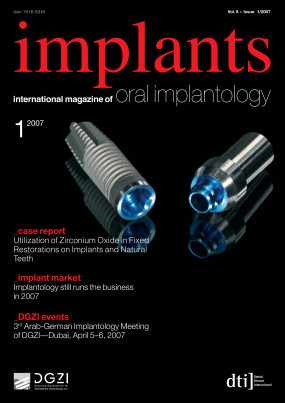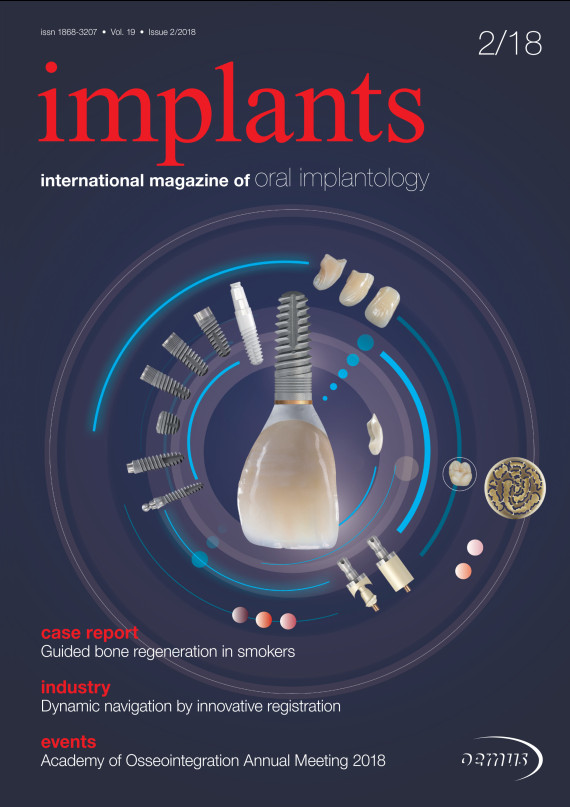Inhaltsverzeichnis
1
3
Implantology together with oral surgery belong to the few disciplines of dentistry that take on the presumably hopeless cases. Almost hopeless refers to those patients with insufficient oral health owing to their own neglect or serious illnesses. The impairments on the daily quality of life resulting from unfixed prosthetics, insufficiently treated gaps and general functional insufficiency are causes of health issues and also an excessive psychosocial burden for many patients. Dentists dedicated to implantology are, in fact, one of the last instances that can provide help in such cases....
4
6
L-PRF in different intraoral applications
Prof. Nelson R. Pinto1, Dr Andy Temmerman2, Ana B. Castro2, Simone Cortellini2, Prof. Dr Wim Teughels2 & Prof. Dr Marc Quirynen21 Department of Periodontology and Oral Implantology, Faculty of Dentistry, Universidad de Los Andes, Santiago, Chile2 Departme
Recent research clearly indicates that wound healing in both soft and hard tissue can be significantly enhanced by L-PRF (leukocyte- and platelet-rich fibrin). This second generation of platelet concentrates may even have the potential to replace substitutes like growth factors and biomaterials in many situations. A further benefit is its easy and inexpensive preparation, lowering the treatment cost also for the patient...
12
Fixed complete prosthesis with no screws and no cement
Dr Karl-Ludwig Ackermann, Gerhard Neuendorff & Janez Fiderschek, Germany
The fifth German oral health study (Deutsche Mundgesundheitsstudie) showed that the population in many countries are ageing and the desire for better quality of life related to the preservation of teeth and their functionality, among other things is constantly increasing. Periodontal disease is a major cause of tooth loss, as tooth loss results in a decreased ability to maintain physiological masticatory function, as well as a decreased general quality of life. Edentulous people exhibit a lower selfesteem by being excluded from normal masticatory function...
18
Biomechanical considerations in solving demanding cases
Dr Juraj Brozovi´c & Barbara Mikuli´c, Croatia
The predictability of dental implant osseointegration has enabled clinicians and researchers to focus on addi - tional success criteria in the overall treatment. 1 Initial assessments of implant therapy considered survival rates, restoration stability, detectable bone loss and presence of soft-tissue infection. 1, 2 As implant dentistry advanced, it was necessary to introduce new assessment points in order to broaden the understanding of favourable outcomes and pending failures. These included aesthetics, evaluated by both patients subjectively and clinicians objectively. A more patient-centred approach has led to a better insight into patient satisfaction, which was often overlooked in the past...
26
30
Bone grafts are used as a filler and scaffold to facilitate bone formation and promote wound healing if necessary. Bone grafting is possible because bone tissue has the ability to regenerate completely if the space into which it has to grow is provided...
34
Whether we like it or not we are embracing the dig- ital era in our brave new world. Many dental practices are now becoming paper free—a digital innovation—and even using tablet computers to record patient details and medical histories. We are continually surprised by the rising age of the technologically savvy patient, particularly those of a certain generation that perhaps we assume to be less “digital” than the perceived smartphone generation. This change in patient demographic and attitude towards technology is filtering through to us in the dental profession...
38
3-D implant planning and mapping that plan to the real surgical environment are two important steps in implant rehabilitation. 1, 2 Misplaced implants can create difficult aesthetics, functional and biological problems and can result in implant loss. 3–5...
42
Bone loss around tapered implants with split coronal microthreads
Drs Jerry Kohen, Tal Bar, Sorin Moscovici & Prof. Ofer Moses, Israel
Dental implants are frequently used for the treatment of edentulism. However, marginal bone loss around implants during the first years after implantation varies between implant systems demanding an evaluation of implant performance over time.
44
48
1,200 participants of 39 countries attended the Oral Reconstruction Global Symposium 2018 in Rotterdam from 26 to 28 April. The three-day event organised by the Oral Reconstruction Foundation (formerly CAMLOG Foundation) chaired by Prof. Dr Irena Sailer (Switzerland) und Dr Ben Derksen (Netherlands) was dedicated to the theme “The Future of the Art of Implant Dentistry”. 57 speakers and experts of 12 nations shared their experience and expertise in the workshop and presentation sessions. Further, all attendees had the possibility to get up to date with the newest product developments at the industry exposition with 21 exhibitors...
50
The bredent group days in Goa , India, were held be - tween 2 and 4 March 2018. For the first time the convention took place outside of Europe. In total 300 dentists and dental technicians from India, Nepal, Europe, Africa, England and Germany travelled to Goa to listen to presentations on the topics of immediate restoration and physiological prosthetics given under the bredent group’s well-known motto of “Leading in immediate restoration—powered by physiological prosthetics”...
52
The Academy of Osseointegration 2018 Annual Meeting was held in Downtown Los Angeles from 28 February to 3 March following the theme “Inspiring imagination—Enhancing health” (Fig. 1). The DGZI was represented by Dr Awwad from California and Dr Botrous from Michigan (both USA). The meeting taking place at the Los Angeles Convention Center welcomed attendees from all over the world. Participants benefited of enjoyable and productive meetings with global colleagues while staying on the cutting edge of technology and up to date with implant dentistry.









